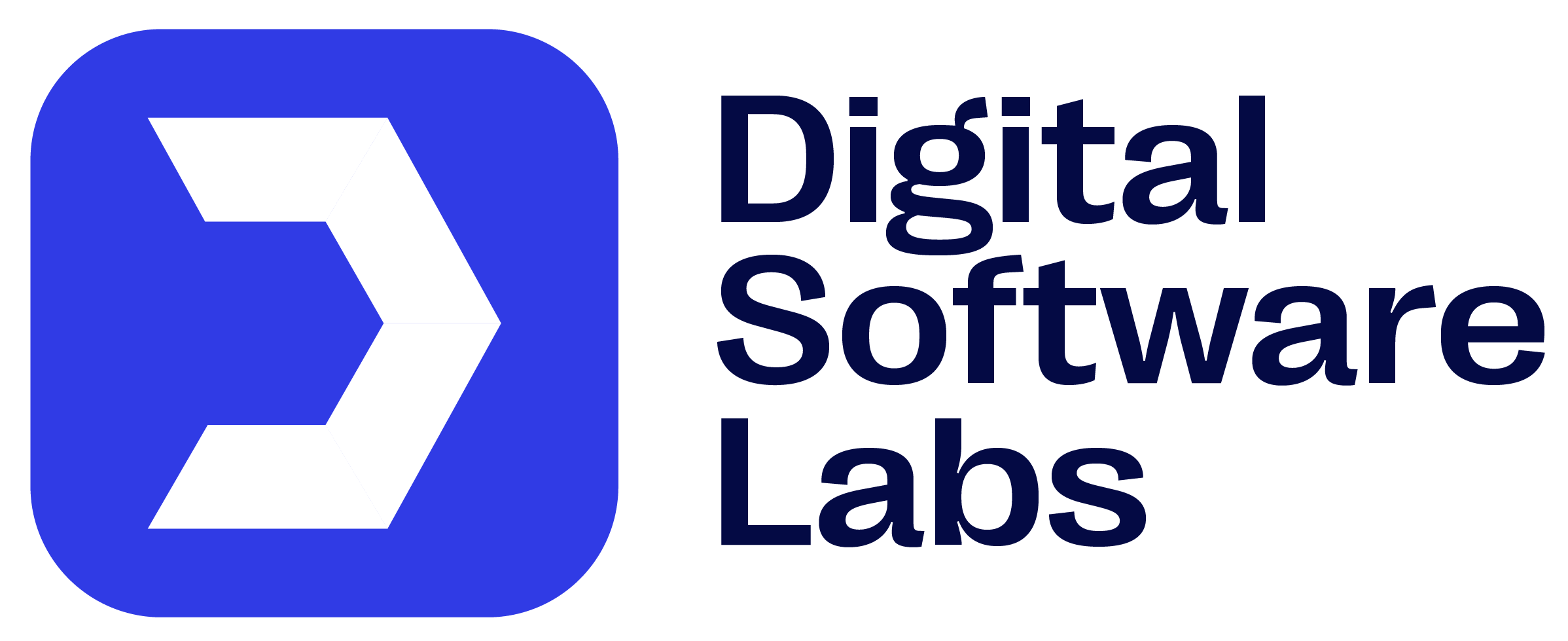The evolution of digital finance has accelerated the demand for mobile banking app development, transforming how individuals and businesses interact with their financial institutions. As consumers continue to expect faster, safer, and more personalized experiences, banks and fintech companies are prioritizing banking mobile app development to deliver intuitive, always-available services.
Modern mobile banking app development services focus on more than just digital transactions. They now encompass intelligent financial tracking, secure authentication, instant notifications, and real-time fund transfers. This shift reflects a broader trend where convenience, user control, and data transparency drive engagement.
A key part of building the best mobile banking app experience lies in addressing platform-specific needs. Whether a company is focused on iOS or Android users, aligning the app with operating system behaviors is essential for usability and performance. That’s why understanding the differences between iOS and Android app development is so important in the planning phase. Android banking app development, for instance, often requires broader device compatibility and security testing across various manufacturers, while iOS apps benefit from Apple’s controlled ecosystem, which supports consistent performance and smoother updates.
Combining the right feature set with strategic platform optimization allows custom mobile banking app development to cater to a wide user base, resulting in increased user retention, operational efficiency, and brand trust. As technology continues to influence user behavior, investing in a tailored, scalable mobile banking app isn’t just a trend; it’s a requirement for digital-first banking.
Mobile Banking App Development Market Growth!

The growth of mobile banking app development directly responds to consumers’ increasing reliance on smartphones for managing every aspect of their daily lives, including financial activities. As physical banking becomes less relevant, mobile apps are filling the gap with secure, intuitive digital platforms that allow users to bank from anywhere, at any time. This shift is not only transforming user habits but also influencing how financial institutions allocate resources. Prioritizing custom mobile banking app development ensures banks remain accessible and competitive in a rapidly digitizing world.
With the rise of app-based platforms in operational sectors such as construction management, where on-site coordination and data tracking are now streamlined through mobile solutions, banking has adopted similar mobility-focused innovations to increase flexibility and reduce friction in the user experience.
Market Valuation
The valuation of the mobile banking app industry continues to surge, driven by advancements in mobile technology and growing consumer demand for on-demand financial services. Banks and fintech companies are significantly increasing their investment in app development jacksonville fl and scalable custom backend development services, focusing on modular architecture and flexible frameworks. The profitability of digital-first banking operations, combined with reduced infrastructure costs, is a major driver behind this upward trajectory, attracting interest from top software development companies.
User Demographics
The user base for banking mobile apps is expanding beyond early adopters and younger generations. While millennials and Gen Z remain the dominant users, older age groups increasingly embrace mobile banking apps for their simplicity, security, and efficiency. Developers from jacksonville IT companies are now integrating accessibility tools, intuitive UI, and multi-language support to cater to diverse user demographics. These inclusivity-driven improvements ensure mobile banking serves users across all age brackets and technological comfort levels.
Consumer Engagement
Mobile platforms have become essential to keeping users engaged with their financial institutions. Through features like push notifications, real-time spending insights, and personalized financial tools, mobile banking app development now plays a central role in daily financial management. Engagement metrics have improved significantly with the integration of smart automation, allowing banks to proactively assist users in achieving their financial goals.
Regional Growth
From urban centers to rural communities, mobile banking app development is enabling broader financial inclusion. Regions that previously had limited access to traditional banking infrastructure are now seeing exponential growth in mobile banking usage, particularly through Android-based platforms that support a wide range of devices. Localization, offline accessibility, and multi-currency support are key integrated features to drive adoption across diverse regions. As mobile technology becomes more affordable, even underserved markets are beginning to rely on banking mobile apps as a primary tool for financial empowerment.
Why Should Businesses Invest in Mobile Banking App Development?

Mobile banking app development is a critical investment for institutions aiming to stay competitive and deliver consistent, value-driven experiences. As consumers increasingly demand convenience, real-time access, and digital autonomy, financial services must meet these expectations through robust banking mobile apps. Creating custom solutions allows businesses to offer secure, user-centered services while streamlining operations behind the scenes.
Digital innovation is reshaping how services are delivered across industries. In the education sector, for example, institutions enhance learning experiences through educational app development, enabling users to access resources, track progress, and receive support directly through mobile apps. Similarly, in banking, mobile platforms serve as dynamic tools for delivering value, empowering users to manage finances intuitively and stay engaged with their financial institutions.
Enhance Banking Convenience for Customers
A well-designed mobile banking app places banking services at users’ fingertips. Account access, bill payments, and fund transfers can be performed anytime, eliminating the need to visit a physical branch. This convenience supports user independence and leads to higher engagement, allowing customers to manage their finances with ease and immediacy.
Help Businesses Reduce Operational Costs
Reducing reliance on manual processes, customer service centers, and physical locations can dramatically cut operational expenses. By automating tasks through mobile banking app development services, businesses streamline workflows, improve resource allocation, and reduce friction in user journeys.
Planning for cost-effective growth is becoming a priority for many businesses, and app development cost insights for 2025 reflect how mobile-first strategies are enabling organizations to scale efficiently while staying aligned with user expectations and evolving tech landscapes.
Keeps Customers Connected
Banking mobile apps help maintain active relationships between institutions and customers. Real-time notifications, personalized messages, and built-in support tools keep users informed and engaged. This continuous connection improves service quality and opens doors for cross-selling and retention by staying visible in users’ daily routines.
Protection of Customer Data
Security remains a cornerstone of custom mobile banking app development. Encryption, biometric login, and multi-factor authentication are implemented to secure personal and financial data. By building trust through strong protection measures, businesses strengthen customer confidence and meet compliance standards across digital ecosystems.
Helps Businesses Stand Out
Differentiation is vital in today’s saturated digital finance market. Offering a unique and efficient mobile banking app with modern features and an intuitive design helps businesses attract and retain tech-savvy users. When paired with consistent innovation and user-first development, it gives financial institutions a competitive edge that drives long-term loyalty.
Boost your business with a custom mobile banking app for improved service and engagement
Enhance services, boost customer engagement, and streamline operations with custom mobile banking app solutions.
Features of Mobile Banking App

The success of mobile banking app development depends on performance and the depth and practicality of its features. In today’s fast-moving digital landscape, users want apps beyond basic banking; they expect tools that help them manage, plan, and protect their finances with ease and intelligence. Modern banking mobile app development focuses on creating intuitive, secure, data-driven experiences supporting everyday financial tasks while encouraging long-term economic health. These features mirror advancements in mobile-first industries, where convenience and user personalization are top priorities.
This shift toward user-first design is part of a broader digital transformation trend seen across various industries. As businesses rethink how services are delivered, Digital Software Labs plays a key role in building scalable, custom digital products that solve real-world challenges. Whether it’s finance, healthcare, logistics, or e-commerce, the focus remains on delivering solutions that combine performance with adaptability, just as a well-built mobile banking app does by integrating convenience, security, and insight into a unified financial tool.
Account Management
The foundation of every banking mobile app lies in its ability to provide seamless account management. Users should be able to monitor balances, view detailed transaction histories, and manage multiple accounts with ease. Whether managing personal or business finances, a centralized dashboard enhances user control and promotes transparency. These functions are critical for daily financial oversight and reflect the user-centric approach in home service app development, where real-time access and scheduling are core to user satisfaction.
Fund Transfer
Transferring money quickly and safely is one of the most used features in mobile banking apps. Transfers must be instant and easy, whether sending funds to another bank account, paying a utility bill, or splitting a dinner bill with a friend. Cross-border payments, scheduled transfers, and third-party integrations (like PayPal or mobile wallets) are also increasingly common. Custom mobile banking app development includes APIs and backend frameworks to ensure these transactions are processed securely with audit trails, push notifications, and seamless confirmation steps built in.
Mobile Cheque Deposit
Mobile cheque deposit is a convenient feature that enables users to deposit checks by photographing them within the app. This function is becoming more common in Android banking app development and iOS apps alike. It reduces the need for users to visit a physical branch and helps financial institutions lower operational loads. High-resolution image processing, OCR (optical character recognition), and fraud detection technologies are integrated to ensure accuracy and compliance. These tools make the cheque deposit feature as secure as it is convenient.
Budgeting and Tracking
Today’s users expect more from their banking app than a simple transaction history. Budgeting and expense tracking features help users stay on top of their financial goals. AI-powered tools analyze spending patterns and offer alerts when users near their budget limits. These financial wellness tools are increasingly popular in custom mobile banking app development, reinforcing user loyalty by helping customers make smarter money decisions.
QR Code Payment
Contactless payments are now a default expectation in retail and service environments. QR code payments built into mobile banking apps allow users to pay quickly at stores, restaurants, and even person-to-person. The functionality is a core part of modern banking, designed to reduce time at checkout while enhancing safety and data privacy.
Personal Finance Management
Apps incorporating financial coaching and tailored spending insights transform the user experience from passive tracking to active management. From goal-setting to categorizing expenses, banking app development now includes intelligent tools that empower users to improve their overall financial health. Like businesses benefit from tailored custom app development, personal finance features deliver personalized value by adapting to user behaviors and needs.
Advanced Account Insights
Advanced insights powered by AI and machine learning elevate the app’s usefulness. These insights might include predictive bill forecasting, credit score tracking, or trend comparisons to previous months. Users are guided toward financial decisions that align with their goals, such as adjusting budgets or setting new savings targets. These features improve retention and make the app a part of users’ daily financial decision-making process. They also support mobile banking app development services, emphasizing long-term engagement over short-term functionality.
Security
Security is the backbone of every mobile banking app. Users must feel confident that their personal and financial information is protected. Multi-layer encryption, session timeouts, and biometric verification are standard, but advanced features like risk-based authentication, device fingerprinting, and instant fraud alerts are now being implemented. With cyber threats evolving, development teams prioritize security testing and compliance throughout the banking mobile app development process. Security isn’t just a feature; it’s a foundational promise.
Biometric Authentication
Biometric login using facial recognition, fingerprint scanning, or voice ID adds a secure and user-friendly access control layer. In fast-paced scenarios where users need to access their bank on the go, this method outperforms passwords in both speed and reliability. For many users, biometric login is now expected rather than optional. Including it in Android banking app development or iOS projects has become best practice, especially as users seek convenience and confidence in protecting their accounts.
Conclusion
The future of finance is mobile, and the demand for intuitive, secure, and personalized digital experiences continues to rise. Investing in mobile banking app development is no longer just a competitive advantage; it’s a necessity. Whether serving retail customers, small businesses, or enterprise clients, a well-executed banking mobile app becomes a central hub for engagement, trust, and growth.
From seamless account management to real-time transactions, advanced analytics, and ironclad security, the features driving mobile banking app development services reflect a shift toward empowering users through convenience and control. Institutions prioritizing these innovations are positioned to build stronger customer relationships and scale more effectively in a digital-first economy.
As more businesses embrace digital transformation, the demand for industry-specific mobile solutions grows. The insights shared across sectors in the Digital Software Labs blog demonstrate how app development is evolving, whether it’s in education, finance, healthcare, or real estate. Each example reinforces that investing in mobile-first technology shapes how services are delivered, relationships are maintained, and value is created.
Ultimately, the success of a mobile banking app depends on how well it integrates into users’ daily lives. With the right strategy, design, and development partner, banks and financial organizations can deliver solutions that are not only functional but also transformative.
FAQs:
The cost of mobile banking app development can vary greatly depending on complexity, design, feature set, platform support (iOS, Android, or both), and integration with third-party systems. On average, development costs range from $50,000 for a basic MVP to $300,000 or more for a full-featured, scalable banking solution. Businesses investing in custom functionality, advanced security, or AI-powered analytics can expect a higher budget. This pricing strategy aligns with the broader app economy, where industries, from fintech to restaurant mobile app development, are investing more in tailored user experiences and real-time operations through mobile-first platforms.
Banking mobile apps offer unmatched convenience, allowing users to access financial services 24/7 from any location. With features like real-time balance updates, mobile check deposit, QR code payments, and budgeting tools, users gain greater control over their finances. Apps also reduce dependency on physical branches, cut operational costs, and increase user satisfaction. Enhanced security features, such as biometric authentication and transaction alerts, further increase trust and engagement.
The future of mobile banking app development lies in increased personalization, deeper AI integration, and expanded digital ecosystems. Expect to see more predictive insights, voice-enabled interfaces, blockchain-powered security features, and seamless interoperability with e-commerce and investment tools. Just as mobile platforms are reshaping customer engagement in hospitality and food service sectors, banking is evolving into a more interactive, user-driven experience that aligns with broader digital expectations.
Mobile banking apps generate revenue through multiple channels: transaction fees, premium features, partner integrations, referral programs, and cross-selling financial products like loans or insurance. They also benefit from reduced in-branch costs and enhanced customer lifetime value.




